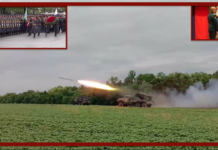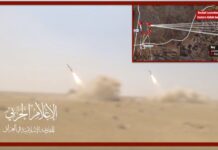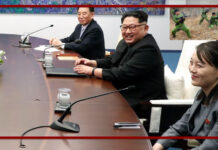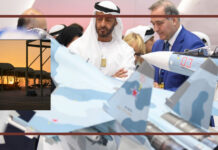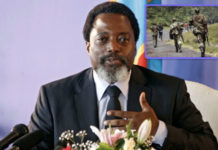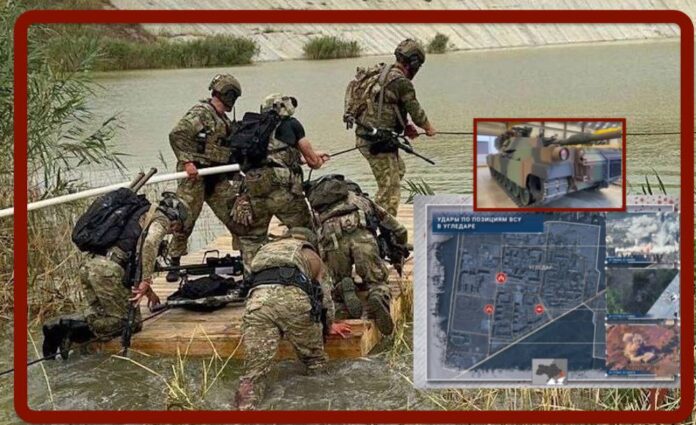
The Swiss parliament has approved the decommissioning of 25 Leopard 2 tanks and then selling them to Germany. The decision on the actual resale and the timing now rests with the Federal Council. The Council of States of the Swiss Parliament approved this decision with 25 votes in favour, 15 against and 3 abstentions. In June the National Council voted to decommission the tanks. Previously, the Parliamentary Security Committee of the Council of States had supported the government’s proposal to sell 25 Leopard 2 tanks to Germany on the condition that they would not be delivered to Ukraine in the future.
In Germany there is discussion about whether or not to give Taurus missiles to Kiev. Berlin is delaying sending long-range, precision-guided Taurus missiles to Ukraine because it fears they will require the work of German technicians in the field. And this could bring Berlin closer to direct confrontation with Russia. The Taurus is a German variant of the Storm Shadow and Scalp missiles that Britain and France have already sent to Ukraine. Germany’s tripartite governing coalition approved in principle the delivery of the Tauruses, but the decision was reportedly frozen by Chancellor Olaf Scholz. According to Scholz, moving military personnel into combat zones to maintain systems would require a parliamentary vote.
Some German officials say sending the Taurus could still be approved when the United States sends a similar weapon to Ukraine. Even if the missile transfer is approved soon, it could take Ukraine much longer to deploy these weapons. This is because the fleet of ex-Soviet military aircraft it has will have to be re-equipped to be able to carry this missile.
The process of de-Russification continues in Estonia: there is a discussion about whether to change the name of the Russian enclave of Kalinigrad, returning it to its original name of Könisberg. Chairman of the Estonian parliament’s foreign affairs committee Marko Mihkelson said the issue of renaming Kaliningrad to Königsberg was raised last spring. “Today we have many reasons not to use the name of Kalinin, one of the leaders of the Soviet terrorist regime, even in the name of a city in our region. It is known that in the Soviet Union there were three cities with the name Kalinin. In 1990, the historical name was returned to Tver, and in 1996 to Korolev. It would therefore be logical for Russia itself to use the historical form of the name Kaliningrad – Koenigsberg,” he says. According to him, all political parties agree with the recommendation to call the city Königsberg. Since Estonia does not have a formal procedure or government authority to decide on the introduction of international geographical names, in this situation this may be more of an advisory decision than anything else.
New details about the destruction of Nord Stream have emerged. Scientists investigating the pipeline attack have revealed new details about the explosions. Norwegian researchers have published seismic data from four explosions. They became the first national organization to publicly denounce two second explosions. The newly discovered further explosions occurred in an area north-east of the Danish Baltic island of Bornholm, around 7 and 16 seconds after the two already known detonations. In total, one was to the south-east of Bornholm and three to the north-east. It still remains to be identified with certainty who carried them out.
Since mid-September, Russia appears to have deployed elements of its new 25th Guards Motorized Rifle Brigade into battle for the first time, according to the UK Ministry of Defence. Since the end of August, the movement of this formation on the territory of Ukraine began. According to available data, units of two maneuver components of the brigade, the 67th division and the 164th brigade, are fighting at the front in the sector west of Severodonetsk and Kremennaya, on the border between the Donetsk and Lugansk regions.
A document sent by Kiev to its Western allies would reveal that Russian drones are full of Western components. Kie also reportedly called for long-range missiles to attack drone production sites in Russia, Iran and Syria. “The specified actions can be carried out by the Ukrainian Defense Forces if partners provide the necessary means of destruction,” the document reads. Ukraine sent it to the G7 last August. Over the past three months there have been more than 600 raids using drones containing Western technology. Among the manufacturers are companies based in the “United States, Switzerland, the Netherlands, Germany, Canada, Japan and Poland,” the document reads. Iran has already diversified its production by using a Syrian plant that supplies drones to Novorossiysk . But drone production is moving to Alabuga in Tatarstan. The Iranian government is trying to “dissociate itself from arms supplies to Russia” and “fails to cope with Russian demand and the intensity of its use in Ukraine”. At the same time, there is no suggestion of any wrongdoing on the part of Western companies. Components are delivered via Turkey, India, Kazakhstan, Uzbekistan, Vietnam and Costa Rica.
Finally, the road to Sweden’s entry into NATO is still uphill
Turkish President Recep Tayyip Erdogan said Turkey will accept Sweden’s membership in NATO if the United States keeps its promise to sell F-16 fighter jets.
“If the United States keeps its promises, our parliament will also keep its promises. The Turkish parliament will have the final say on Sweden’s membership in NATO,” the Turkish president said.
Back in July, Erdogan even said that Brussels would have to facilitate his country’s accession to the European Union before Ankara moved to approve Sweden’s request to join NATO.
In Erdogan’s flurry of statements last week, the Turkish leader announced that the Turkish parliament was not ready to ratify Sweden’s NATO candidacy because Stockholm had not gone far enough to secure a place in the Alliance.
On the morning of September 27th the front line looked like this.
Reports from the Zaporozhye front stated that the Ukrainians were attacking near the village of Verbovoye with several infantry groups supported by artillery and armored vehicles. The Russian press pushed them away. In other sections of the Zaporozhye front, relative “calm” has been reported for several days.
In the Kherson direction, the Ukrainians are concentrating their forces in the second echelon for a landing operation, the main point of which will be the assault on Novaya Kakhovka, which would allow them to break through to the Perekop Isthmus, that is, get to the Crimea, cutting off the Russian troops in the southwestern part of the Kherson region.
Intense activity by Western satellites was then reported, which would film not only the places of concentration of Russian personnel and equipment, but also the command posts and communication centers, including on the western coast of Crimea.
Near Kleshcheyevka and Andreyevka, south of Artyomovsk (Bakhmut), fighting continues. Ukrainian attacks and Russian counterattacks. North of Artyomovsk, Russian troops would advance near Orekhovo-Vasilyevka.
Despite the relative lack of news in the Yuzhnodonetsk direction and a slight decrease in activity near Urozhainy and Staromayorsky, heavy fighting continued near Ugledar.
Several videos have been released showing targets being hit in a city occupied by Ukrainian forces. Russian attacks with bombs and UAVs.
According to the Russian Ministry of Defense, at 5pm the situation was as follows.
In the Zaporozhye direction, Russian units, airstrikes, artillery fire and heavy flamethrower systems repelled an attack by the assault group of the 71st Jaeger Brigade of the Ukrainian Armed Forces in the area of the village of Verbovoye, Zaporozhye Region.
Furthermore, in the area of the Rabotino settlement in the Zaporozhye region, men and vehicles of the 47th and 117th mechanized brigades of the Ukrainian Armed Forces were hit. Over 60 Ukrainian soldiers killed, two armored combat vehicles and three vehicles destroyed; two US-made M777 artillery systems, one Akatsiya self-propelled artillery mount, and one Msta-B howitzer.
In the Donetsk direction, 10 attacks by assault groups of the Ukrainian Armed Forces were repelled. During the day of hostilities, Ukrainian losses were reported to be 390 Ukrainian servicemen killed and wounded. An ammunition depot of the Ukrainian Armed Forces was destroyed in the Zarya area.
An attack by the Ukrainian Armed Forces in the Verbovoy area was repelled in the direction of Zaporozhye.
In the southern direction of Donetsk, the Russian Armed Forces repelled an attack by the Ukrainian Armed Forces.
Two attacks by the Ukrainian Armed Forces were repelled in the direction of Krasnolimansk.
In the Kupyansk direction, up to 15 Ukrainian soldiers were killed during the operations. More than 45 Ukrainian soldiers were killed in the direction of Kherson. A sabotage and reconnaissance group of the Ukrainian Armed Forces was also eliminated.
In the areas of the settlements of Verbovoye, Rabotino, Chervony Yar and Karpovka, command and observation posts of the Ukrainian armed forces were hit; 8 HIMARS projectiles were shot down by the defense systems .
Graziella Giangiulio e Antonio Albanese


